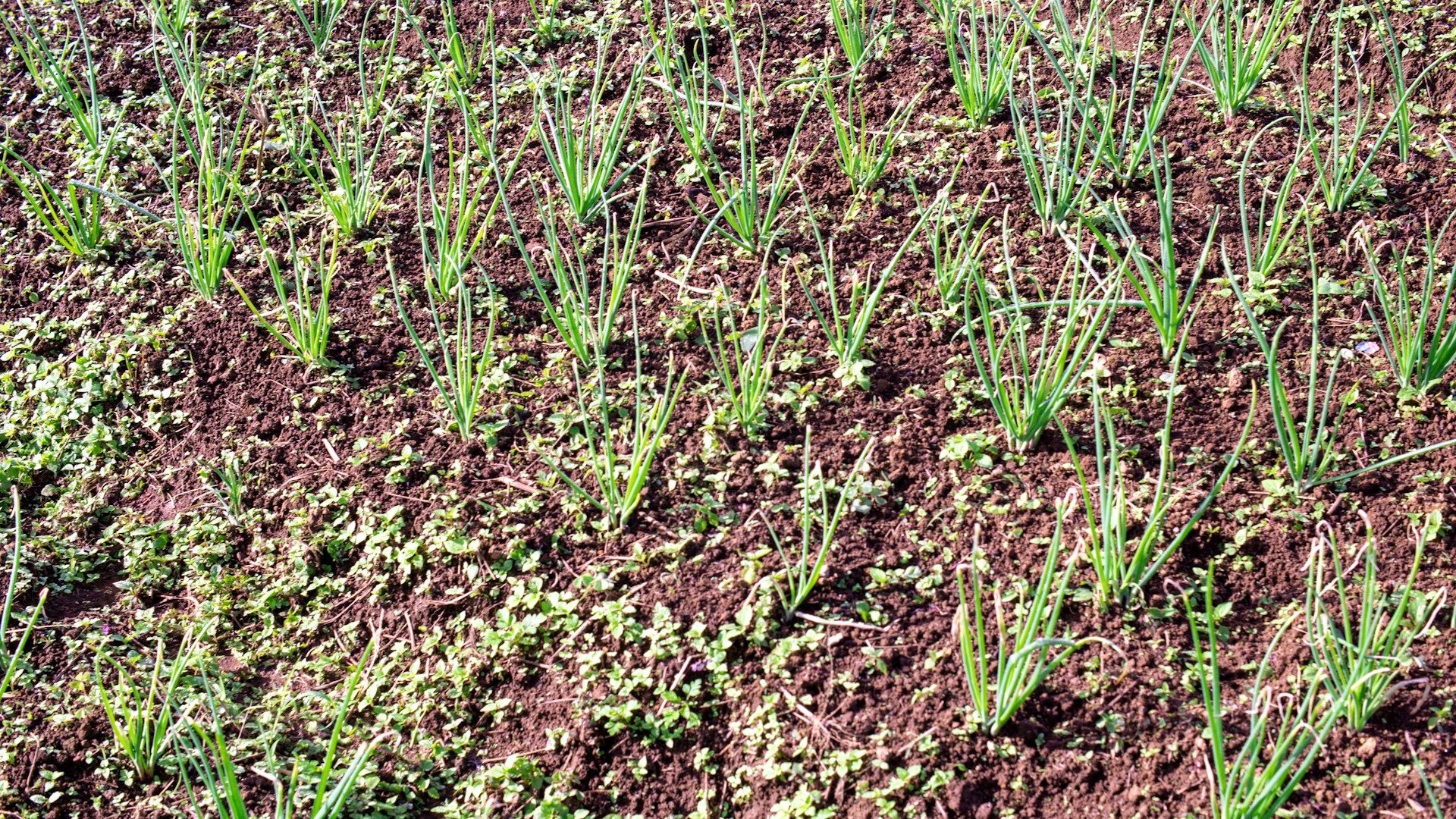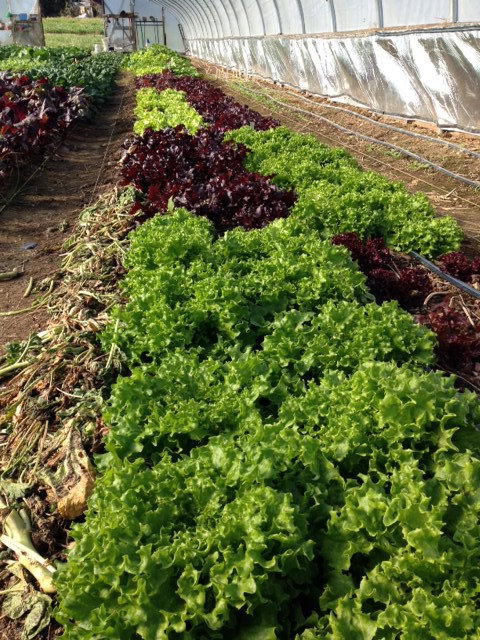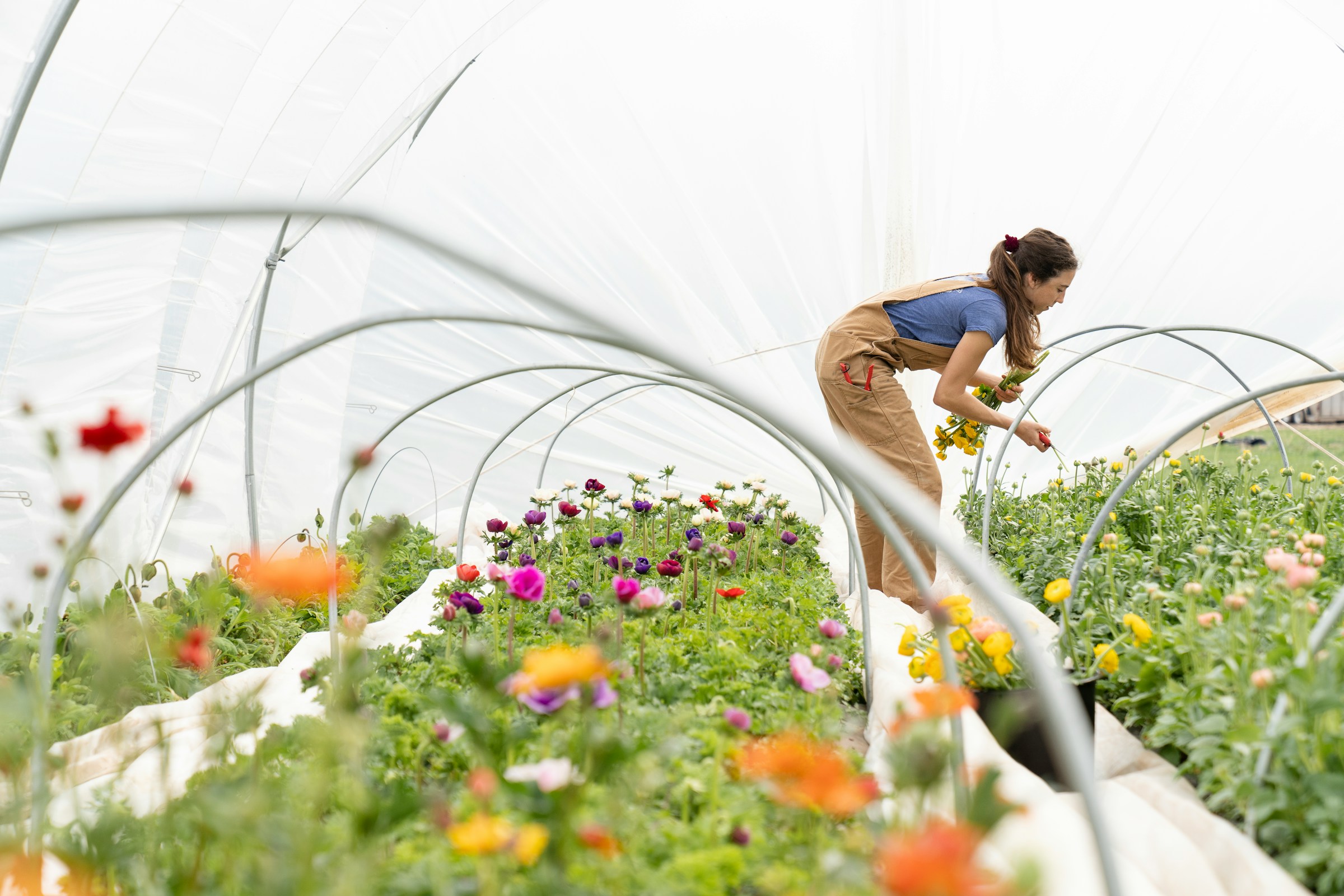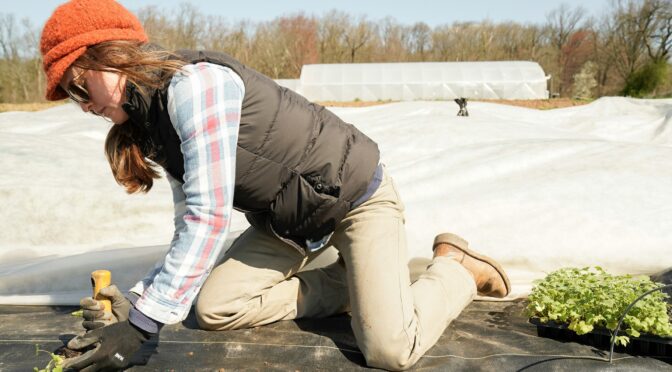Season extension is a fundamental element of small vegetable farms across the nation, but we’re beginning to see it more and more in backyard gardens and homesteads, too! Hoophouses, high tunnels, low tunnels, row covers, cold frames, and mulches can offer amazing benefits no matter your growing scale.
In much of the Southeast, hot summers limit the production of cool-weather crops like kale, spinach, pak choi, cauliflower, and spring radishes. Using season extension can allow you to grow more of these crops during the fall, winter, and spring.
Growing on these “off-seasons” comes with other benefits, too. Crops growing in these cooler seasons may struggle less with pests, diseases, and drought. It can also be more enjoyable for you. Instead of working in the garden on muggy summer mornings when it’s 80°F in the shade, you can enjoy fall’s cool, crisp days.
While frost dates become less critical with season extension, you still need to think about day length. No matter how warm your soil stays, your plants won’t grow at the same speed with fewer hours of sunlight. You may see a dramatic difference in growth rates as you dip from 12 hours of daylight in early fall to 9 hours in December. 
Sow your bulb onions in cold frames or under row cover between September and February.
In the Southeast, getting good production from bulb onions is challenging. We’ve found that giving them time to put on growth in the winter and early spring is critical to large bulbs. They need plenty of time to bulb up before the heat of summer signals them to go dormant for the season.
Continue sowing cold weather crops in hoops and high tunnels throughout the fall and winter.

It’s possible to have a four-season garden. You can continue sowing cool-season crops like mustard greens, spinach, and chard right through the winter. Their growth is slower due to the limited daylight, but it will pick up as the days lengthen.
Depending on your zone, your crops will need different levels of protection. Growers in the deep south may get away with light row cover, while those in northern areas and the mountains will need additional protection. For very cold areas, sowing in a high tunnel or hoop house and then adding row cover on hoops over the crops within the high tunnel provides an excellent buffer.
Lay shade cloth over beds for a week to cool the soil before sowing cool-season crops.
In the Southeast, summer temperatures rarely cool off when we think they should. Often, it’s still hot when we’re trying to sow certain fall crops that take a bit longer to mature. It’s a balancing act between temperature and available day length.
Laying shade cloth over the beds for a week or two can help cool the soil and encourage crops to germinate. We may use this technique with crops like lettuce, cabbage, broccoli, and carrots.
Start early spring greens under low tunnels and switch to shade cloth later.
Low tunnels or row cover over hoops can allow us to enjoy salad season a bit early and keep enjoying it longer. Start your spring greens beneath plastic or thick row cover when the weather is still cold. This can be removed as the season warms, but don’t remove the hoops yet!
As spring heats up and turns to summer, you can use shade cloth over the hoops to provide a bit of heat protection. This will help you get more season from your greens before they bolt.
Overwinter biennial vegetables in a hoop house or low tunnel for seed production.
We usually recommend that new seed savers start with easy annual crops like corn, beans, cucumbers, and tomatoes. As you move along your seed-saving journey, you may want to work with biennial crops, too. Biennials are crops that produce seed in their second year of life. Therefore, they must survive the winter to produce seed. Some common biennials include hollyhocks, beets, carrots, and leeks.
We give these crops some winter protection to help ensure that they survive to produce seed the following year. Growing them in a high tunnel or placing a low tunnel over them in the fall can help ensure success.
Use high tunnels or hoop houses to start seeds.
While some crops are highly sensitive to temperature and need to be started somewhere warm, other crops can be started in a hoop house and transplanted into other beds later. Good examples are cabbage, bunching onions, and lettuce.
You can also use your tunnel to harden off seedlings, such as peppers and tomatoes, that you plan on transplanting into it anyway.

Grow early flowers.
We often think of season extension for vegetables, but flower farmers use it, too. Planting into hoop houses or low tunnels can provide an abundance of early blooms for bouquets.
Plant fall root crops into high or low tunnels for easy harvest through the winter.
Many dream of eating fresh from the garden year-round. Root crops like fall radishes, beets, and carrots planted in later summer and early fall can help make this a reality. They can be left in the ground and harvested as needed throughout the winter. Unlike summer roots, which may turn woody and tough if left in the ground too long, winter roots will stay sweet and crisp for months.
Keep row cover on hand for unpredictable frosts.
Frosts don’t always come on schedule. Keeping row cover on hand can help you cope with early or late frosts. It can be draped over stakes or hoops to protect crops or even draped over fruit trees to help protect early blossoms from a late freeze.
Plant warm-season crops one month early in your hoop house.
Many farmers find that they can plant cucumbers, tomatoes, and other warm-season crops into high tunnels or hoop houses a month before they can transplant them into the field. Setting up a small hoop house this fall may help you achieve early production of your favorite summer vegetables.
Using row cover can improve production in various ways. Learn more about how we use row cover to protect our crops from pests and diseases and isolate pollination, too!


One thought on “10 Season Extension Techniques”